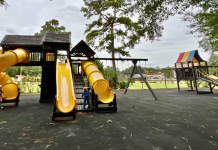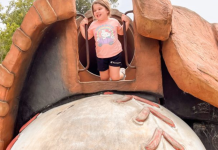 Ahhhh childhood friendship. When the magic hits, nothing else can compare. Bike rides in the sun, late night giggles, movie nights, the smiles shared when my child realizes they have someone who has their back (and it’s not just Mom).
Ahhhh childhood friendship. When the magic hits, nothing else can compare. Bike rides in the sun, late night giggles, movie nights, the smiles shared when my child realizes they have someone who has their back (and it’s not just Mom).
But when the magic is slow to come, it can leave us parents at a loss. How much do we intervene? Is that one acquaintance really cutting it? Is our kiddo lonely? Is he talking to kids at school? Is she asking kids to play?
Does My Child Need to Make Friends?
The short answer? Yes!
Some kids may be happy with one close friend, while others may seek out a larger group. In friendships, children gain a sense of belonging. Good friendships can help kids gain a new level of self-esteem, learn social skills, resolve conflict, and try new things.
Friendship Takes Time
A study from the University of Kansas found that it takes roughly 50 hours of time together to move from mere acquaintance to casual friend, 90 hours to go from that stage to simple “friend” status, and more than 200 hours before you can consider someone your close friend.
Two hundred hours is a long time! So first, let’s get our expectations in check. Friendship takes time! Like, a lot of time!
Let’s be patient with our kids as they navigate new school years, sports teams, and clubs. Friendship might come easily, but it might also take time. That’s okay!
PRO TIP: Recruit a team. If, despite your best efforts, friendship is still coming slowly for your kiddo, touch base with their teacher to see what’s happening at school. Sometimes a new seat assignment can make all the difference!
How I Help My Kids Make Friends
1. Teach Your Kid to Be a Good Friend.
We love family dinners. We play 20 questions, have the best would-you-rathers, and talk about how to be a good friend A LOT. At ages eight, six, four, and two we are a long way from actually following through on all the things we talk about. However, talking about things regularly and in a light, happy setting can set the stage for other conversations later.
We have a little book about manners and flip to a new one every week. My kids know this will be a very quick, fun thing then we move on to something else. Car rides, bedtime, or after a show with a good/bad example can also be a good time to intentionally talk about friendship.
PRO TIP: Don’t have a book? Just google “how to be a good friend __ -year-old” while dinner simmers. Pick ONE tip and mention it between bites of mac and cheese. Set a weekly reminder on your phone for 5:00 p.m. to remember next week.
2. Teach Kids How to Start a Conversation.
It’s not unusual for me to playfully drill the kids before the first day of a new activity with, “And how do we start a conversation!?” From the backseat, the equally playful and exaggerated groans respond, “With information, a question, or a compliment! We got it, Mom!” Then we like to make lots of silly examples because even though we all know saying hello is easy in the car, it can be really, really scary in real life.
Here are a few scripts my kids use to get a conversation started:
Information
- Hi, I’m _______. Today’s my first day.
- Hi, I’m _______. I just moved here from _______.
- Hi, I’m _______. I don’t think we’ve met yet.
Question
- Hey, do you know where the bathroom is?
- Hey, do you know who the coach is for the blue team?
- Hey, I go to _______ Elementary. Where do you go?
Compliment
- I love your shoes! Where did you get them?
- Cool move! Can you teach me?
- I love your pink shirt! It really makes your eyes pop!
PRO TIP: Model starting conversations all the time! Let your kids see that sometimes it will go well, and sometimes it will go . . . not so well. Show them you’ll try again.
3. Be a Host. Yes, YOU!
There is nothing like that dopamine rush when I get invited to something! Being the one to initiate, invite, plan, and host can be hard. I am so grateful when friends can do all those steps, and I recognize that I can be a host too!
This hasn’t always come naturally to me; the more I practice, the easier it gets! I’ve learned to always keep paper plates stocked for dinner or dessert with another family. I’ve learned kid birthday parties don’t have to cost a lot to be fun. I can host a park meet-up when I don’t have time to clean the house. I can host a playdate at home when my baby needs to nap. I can invite an acquaintance for a walk so conversation flows easier. I can invite people to attend events with my family, so we can come/go at whatever time works for us.
PRO TIP: Make it easier for your child to invite someone. Help them narrow it down by getting specific: “I was thinking it’d be fun to invite someone to play with us at Gahagan Park this Saturday. Is there a friend from your class you’d like to invite?”
4. Show Up.
Say yes! Say yes — a lot! Say yes to birthday parties, say yes to playing in the front yard, say yes to knocking on the neighbors’ door, or inviting someone over.
Yes, that means you might have to clean the house. It means you might have to bring a snack for the soccer team your kid so dearly wants to join. It means your relaxation time might have to happen another time. These little yeses add up over time!
Of course they’re not best friends with the new kid who invited them to the party, not yet at least. Remember, friendship is about T-I-M-E, and say yes!
PRO TIP: Build downtime into your weekly schedule so you can roll with spontaneous events more easily. Kids who are well rested and have chances to recharge will be better able to give freely to new and old friendships.
5. Get Comfortable With Rejection.
Event planners know the 60% rule. It doesn’t matter how close your friends are, how cool the party is, or how much you text to coordinate the perfect time for everyone . . . 60% of people will come. And that’s if you’re lucky.
We teach our kids about this whenever we are the hosts. We teach our kids this by telling them about times we need to be the ones to say no. One no is not a reason to stop being a good friend to everyone else.
PRO TIP: So much of this is done through our phones, parent to parent. Pull your kids into the loop so they can learn how to decline kindly and see that this happens a lot.
6. Try New Things.
We love getting out of the house to try new things, and meeting new people when we do. One-on-one playdates certainly have their place. With a new activity, however, all the people who want to try the activity have already signed up, paid, and put it on their calendars. All we have to do is show up and meet all these awesome people! I have found it’s much easier to talk and make new friends when we have something in common or when we’re working on something together. It’s the same for my kids!
Sports, classes, events at the library, community gatherings, and after-school activities can give my kids the same opportunity to make a new friend or deepen an existing friendship. Halfway through the season, I like to ask if there’s anyone they’d like to connect with outside of the activity. I ask again the second to last time so I have time to text the coach for the mom’s number or catch the dad as they’re walking out.
PRO TIP: Sports lovers, keep a running note on your phone so your child can request to be on their friend’s team again next year.
















